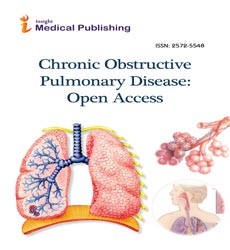Antimicrobial Resistance: Is there light at the end of the tunnel?
Ankur Gupta
Menarini Asia Pacific, Singapore
Received Date: 2022-03-02 | Accepted Date: 2022-03-11 | Published Date: 2022-03-31Ankur Gupta
Menarini Asia Pacific, Singapore
Received date: 2022-03-02 | Accepted date: 2022-03-11 | Published date: 2022-03-31
Visit for more related articles at Chronic Obstructive Pulmonary Disease: Open Access
Abstract
Antimicrobial resistance or AMR is a serious global health emergency. The rapid spread of multi-drug resistant (MDR) and extremely drug resistant (XDR) bacteria across the globe has put the success of modern medicine in jeopardy. According to a report published by Jim O Neil in 2014, if no action is taken now then by the year 2050, 10 million people will die every year due to drug-resistant infections and this number would be greater than deaths caused by diabetes and cancer put together. Carbapenem resistant Enterobacteriacae (CRE). Carbapenem resistant Pseudomonas (CRPA) and Carbapenem resistant Acinetobacter (CRAB) have been identified by WHO as the priority pathogens for which new antibiotics are needed very soon. Focus on new rapid diagnostics, increasing coverage of vaccines, strengthening the national/regional epidemiological surveillance networks, developing novel alternates to antibiotics and suggesting ‘out of the box’ new drug development and commercialisation models are some of the measures proposed to counter AMR. The GAIN (Generating Antibiotic Incentives Now) Act - 2012, the PATH (Promise for Antibiotics and Therapeutics for Health) Act-2015 in US and ND4BB (new Drugs for Bad Bugs) 2013 by European Union are some of the well-known large initiatives taken to incentivise new antibiotic discovery. Pharmaceutical industry has also risen up to the challenge and the pipeline for breakthrough antibiotics targeted against critical gram negative pathogens is beginning to build up. Antimicrobial Stewardship (AMS) programs to optimise the clinical outcomes and minimise the unintended consequences of antibiotic use are being advocated at both hospital and community setting. All these measures plus increasing awareness and education on rational use of antibiotics raises hopes that there is light at the end of the tunnel, however if these efforts are not sustained and strictly enforced then this light at the end of the tunnel could be of an incoming train.
Select your language of interest to view the total content in your interested language
Open Access Journals
- Aquaculture & Veterinary Science
- Chemistry & Chemical Sciences
- Clinical Sciences
- Engineering
- General Science
- Genetics & Molecular Biology
- Health Care & Nursing
- Immunology & Microbiology
- Materials Science
- Mathematics & Physics
- Medical Sciences
- Neurology & Psychiatry
- Oncology & Cancer Science
- Pharmaceutical Sciences
